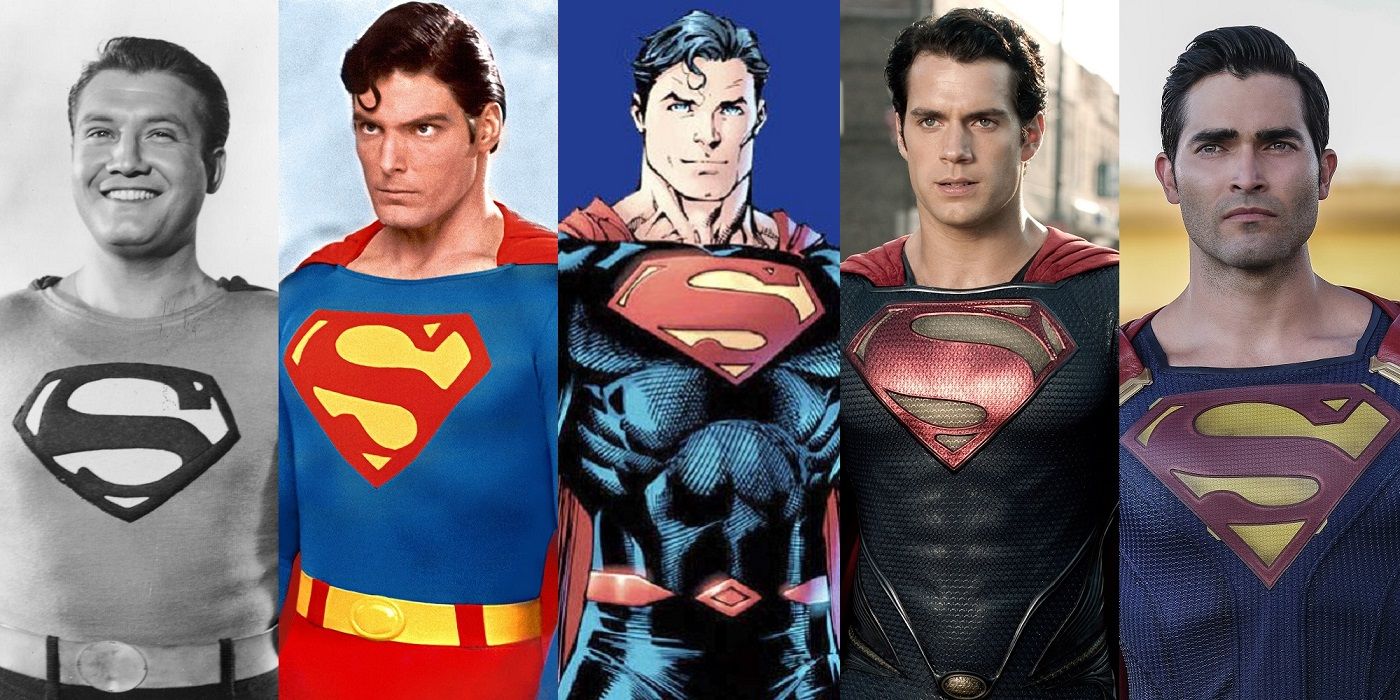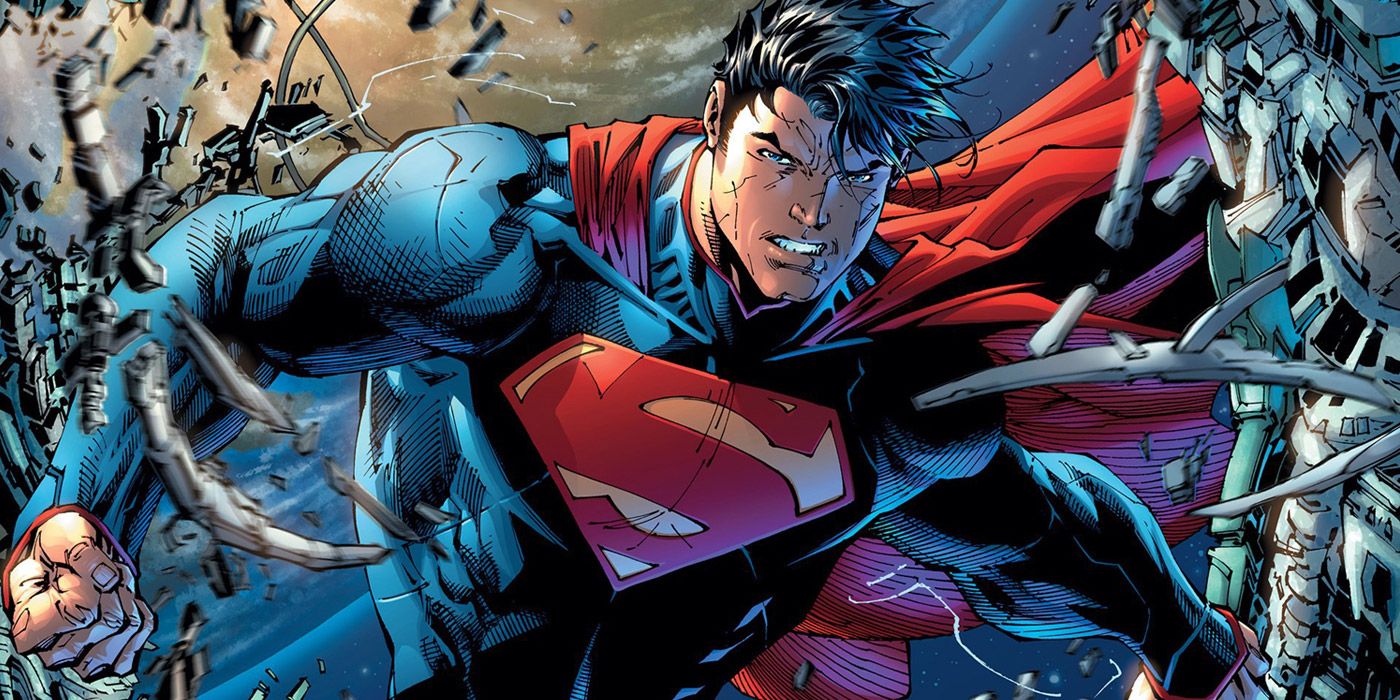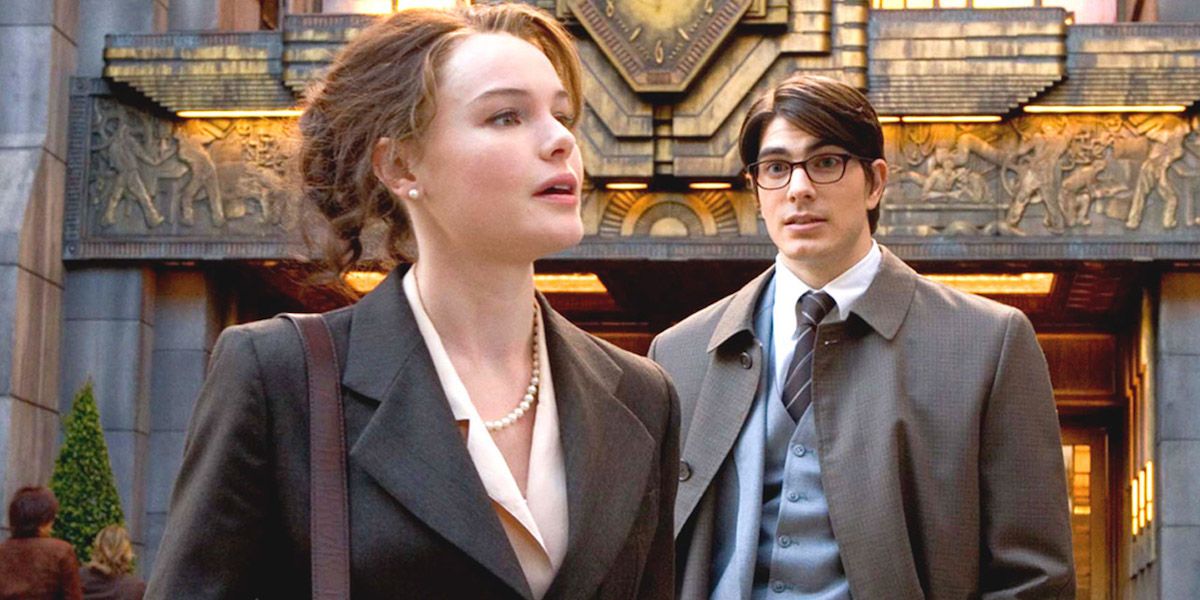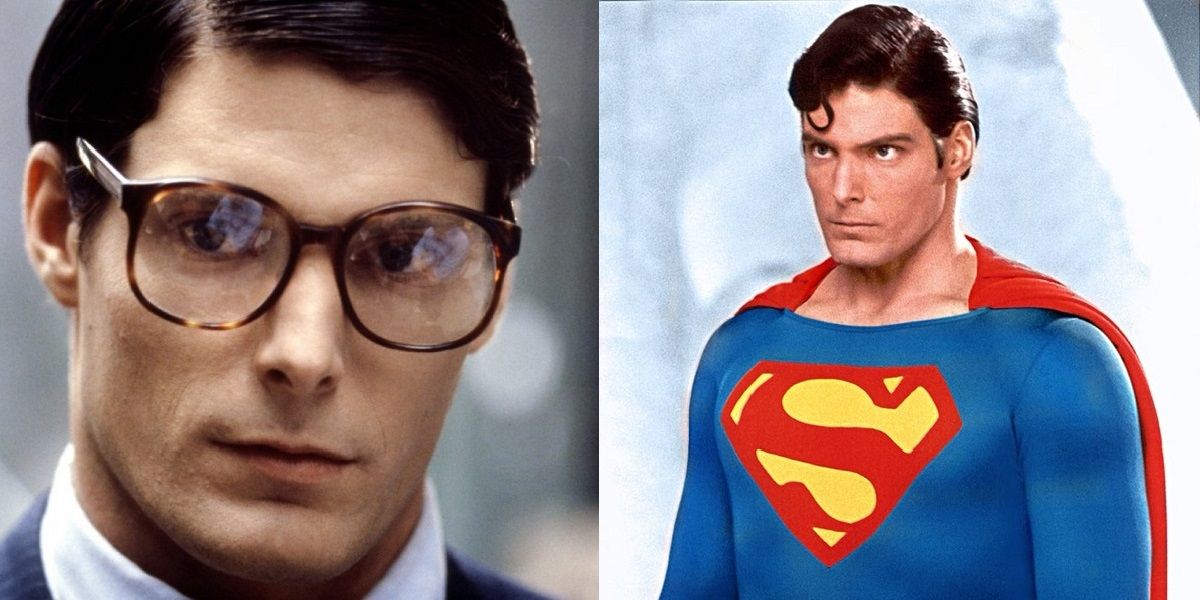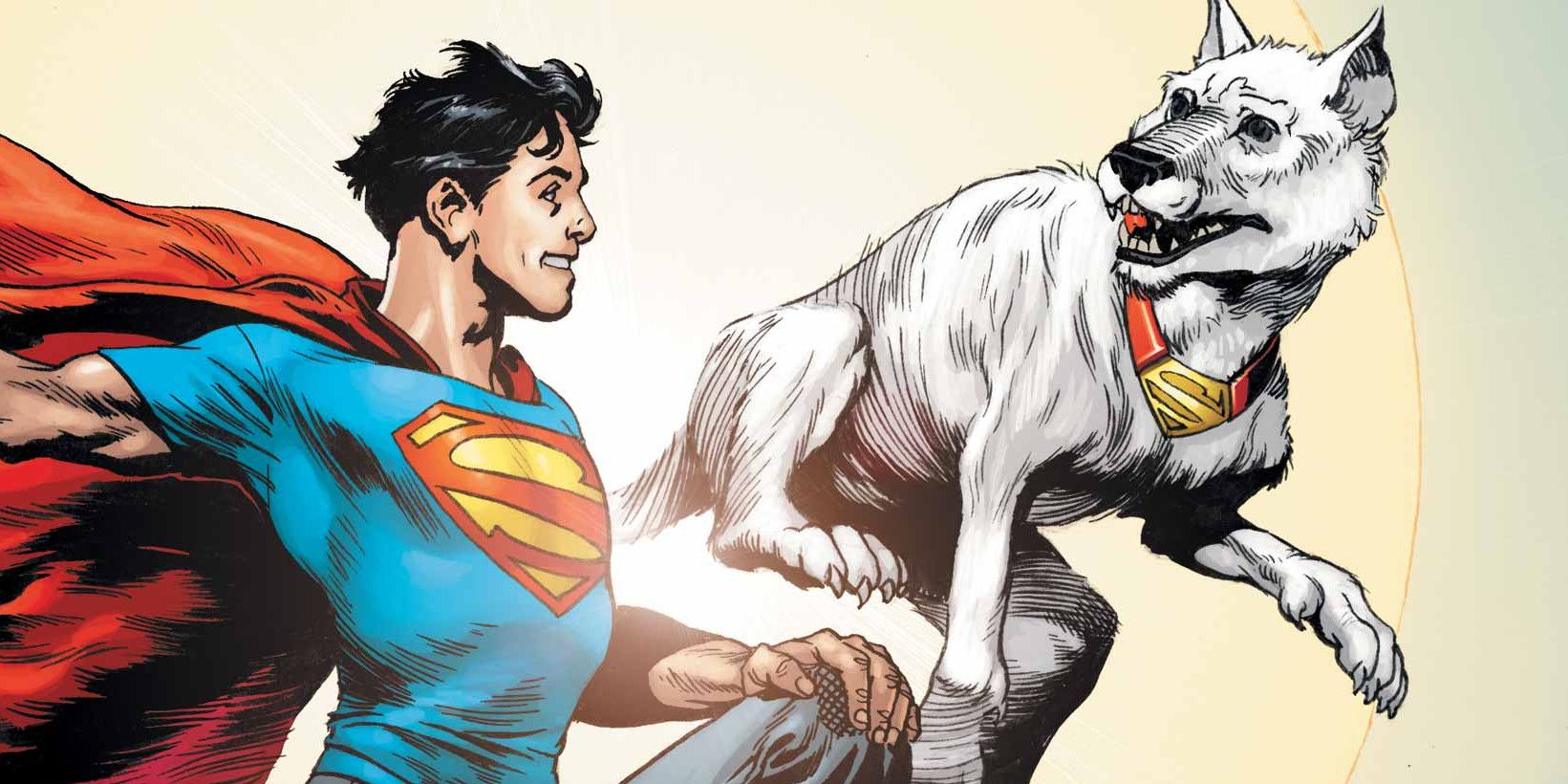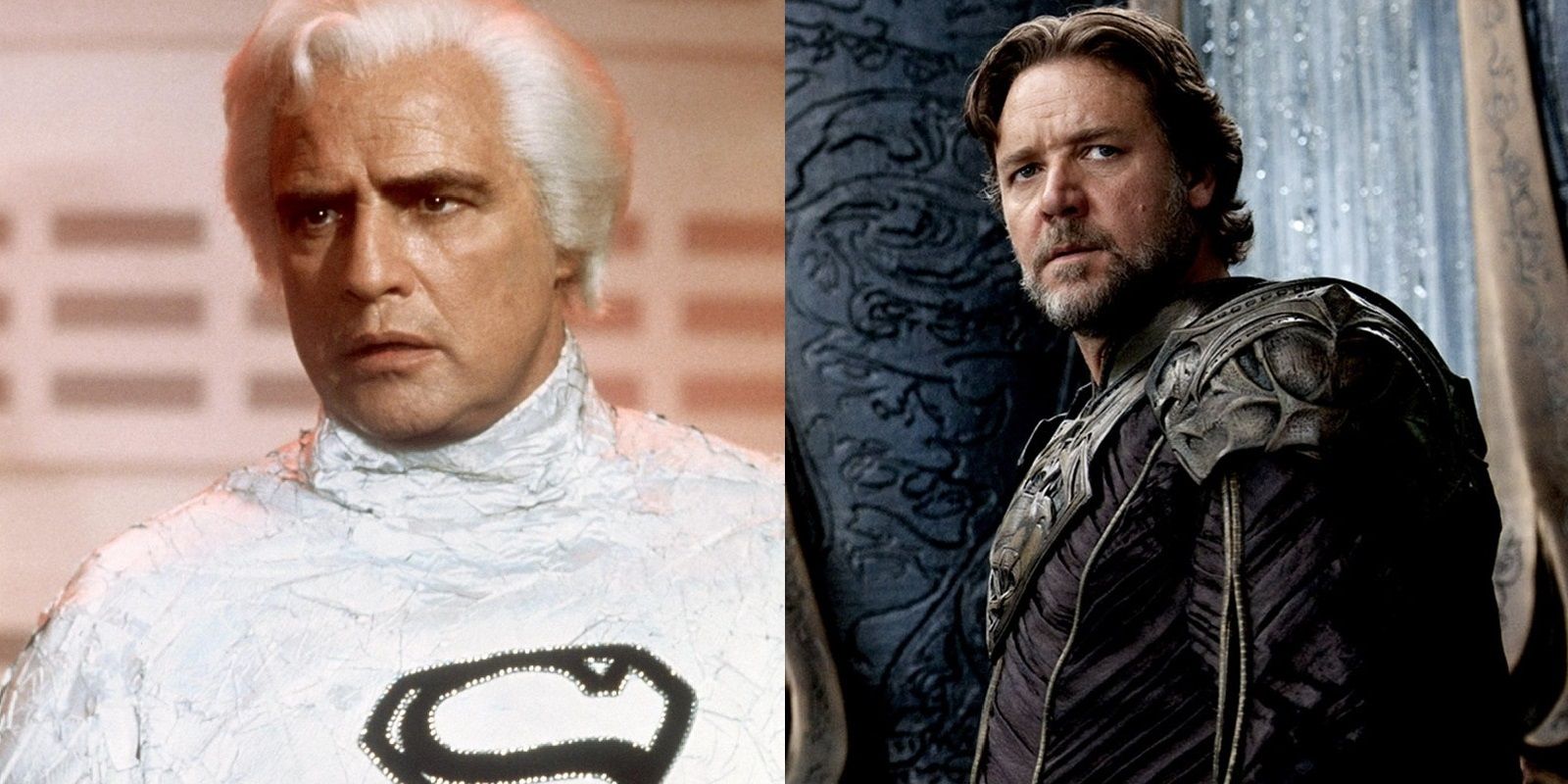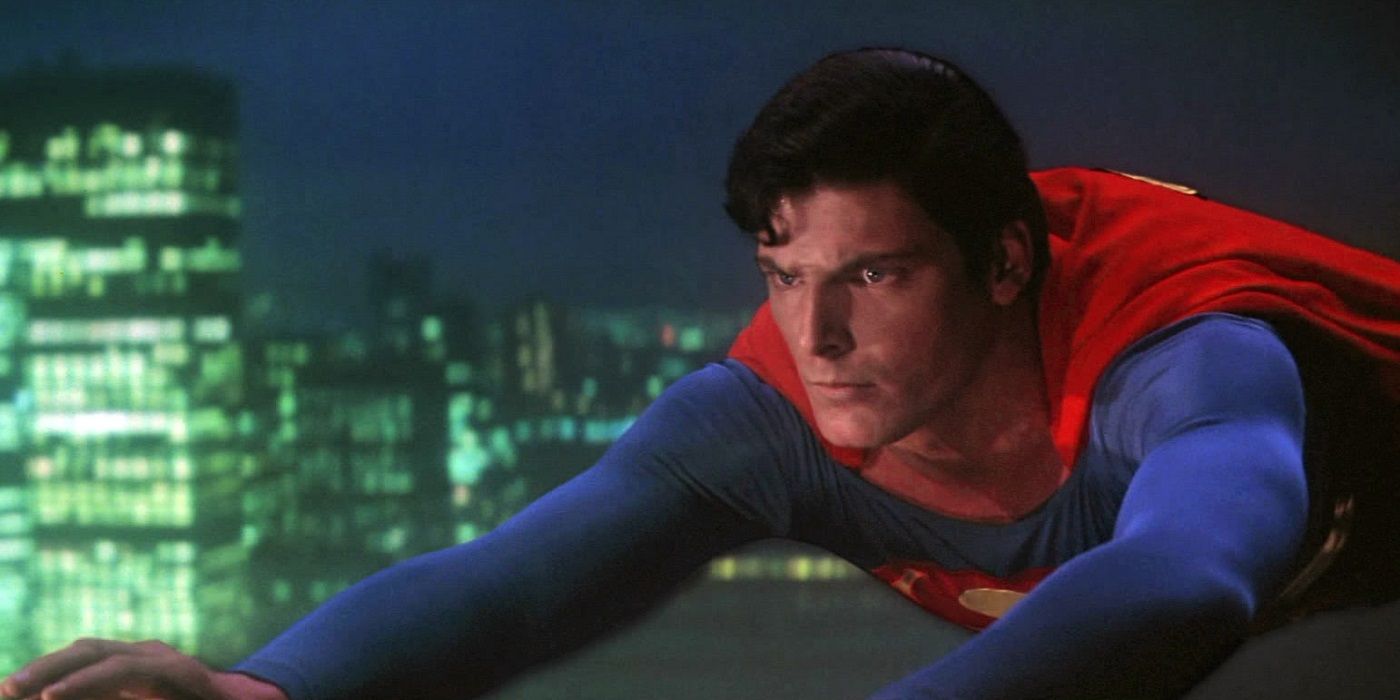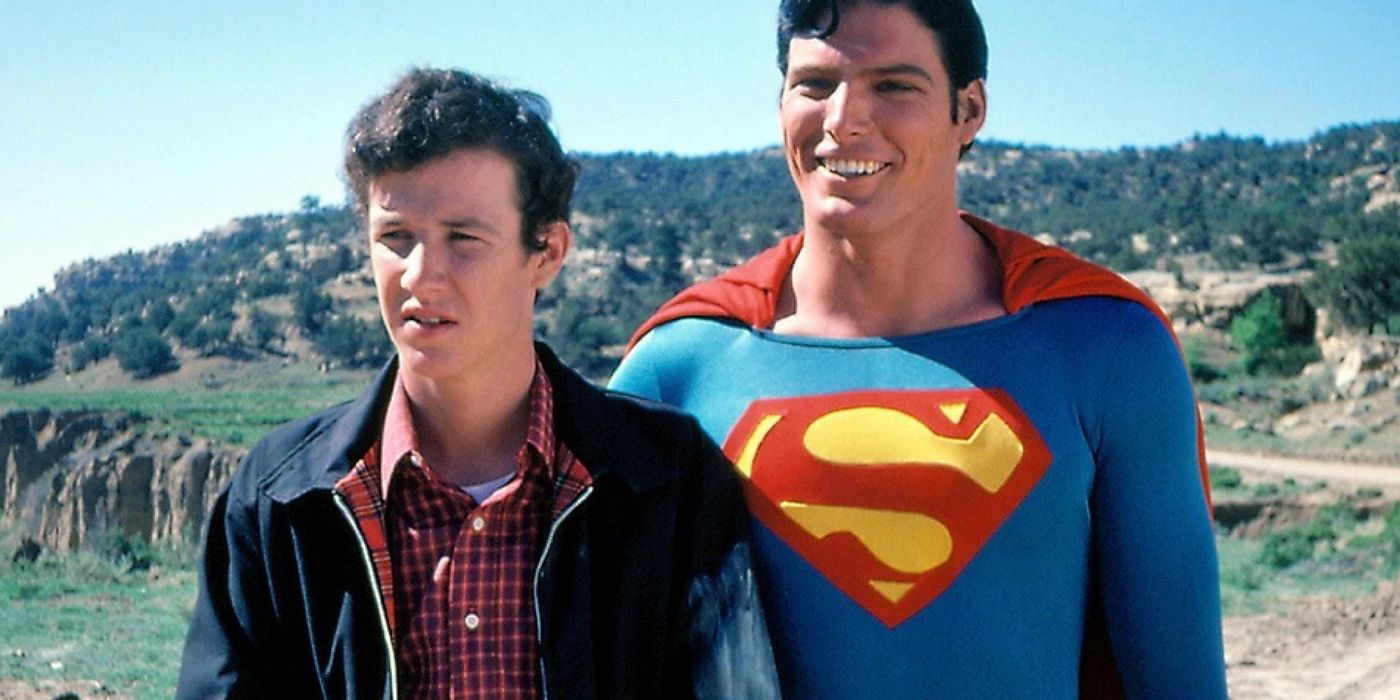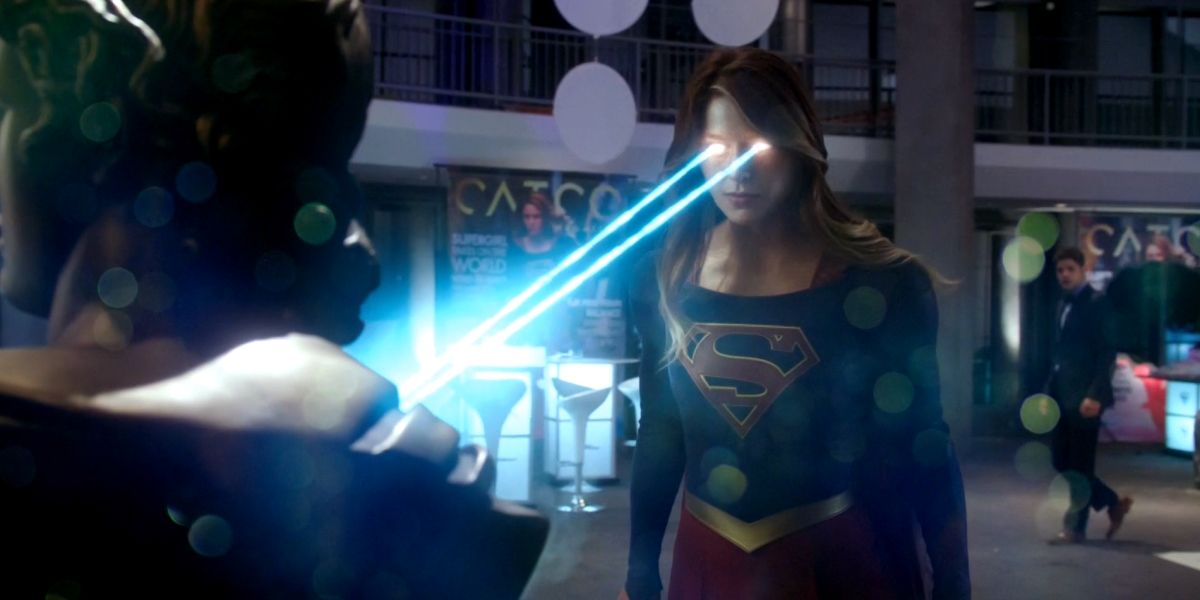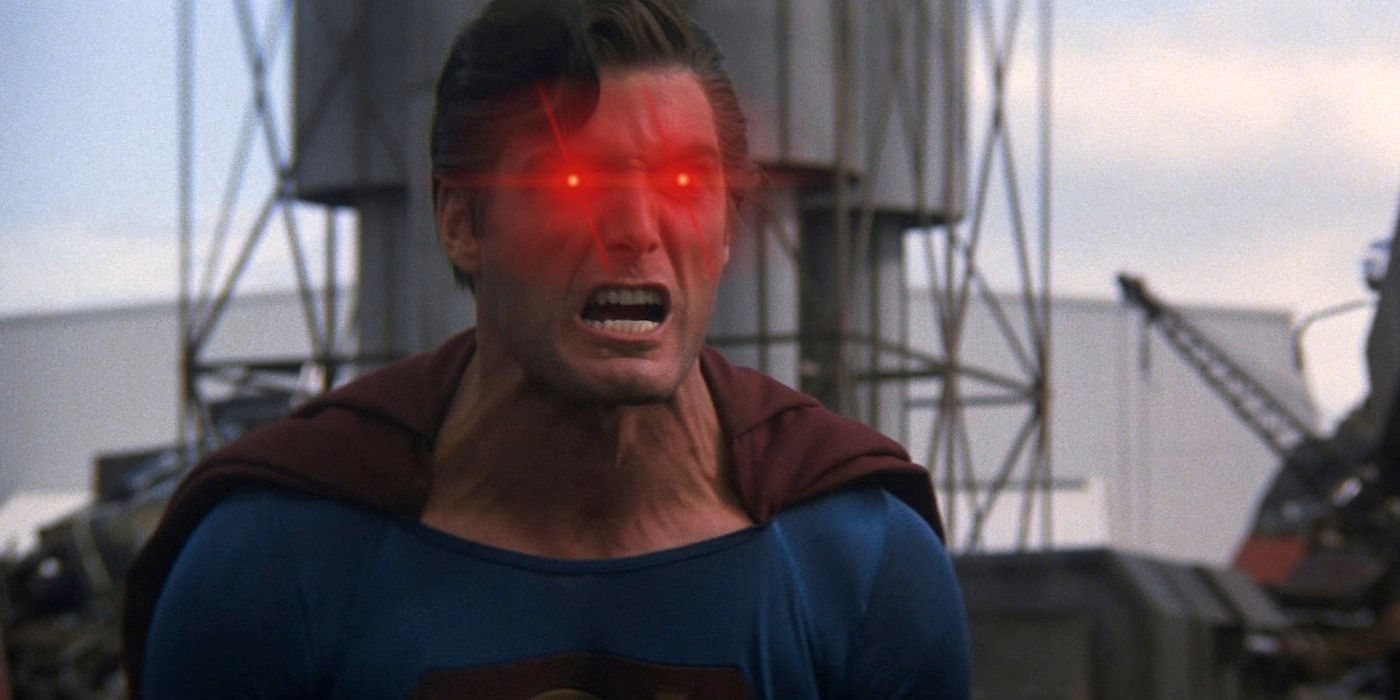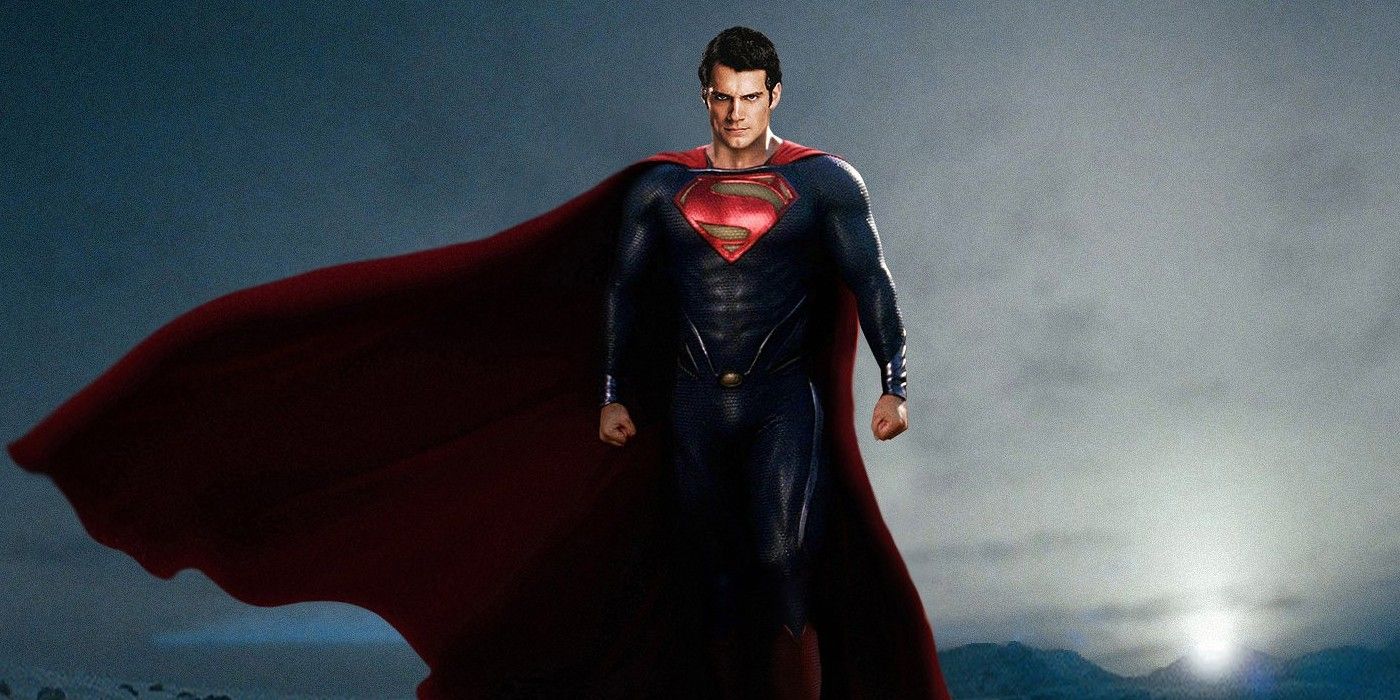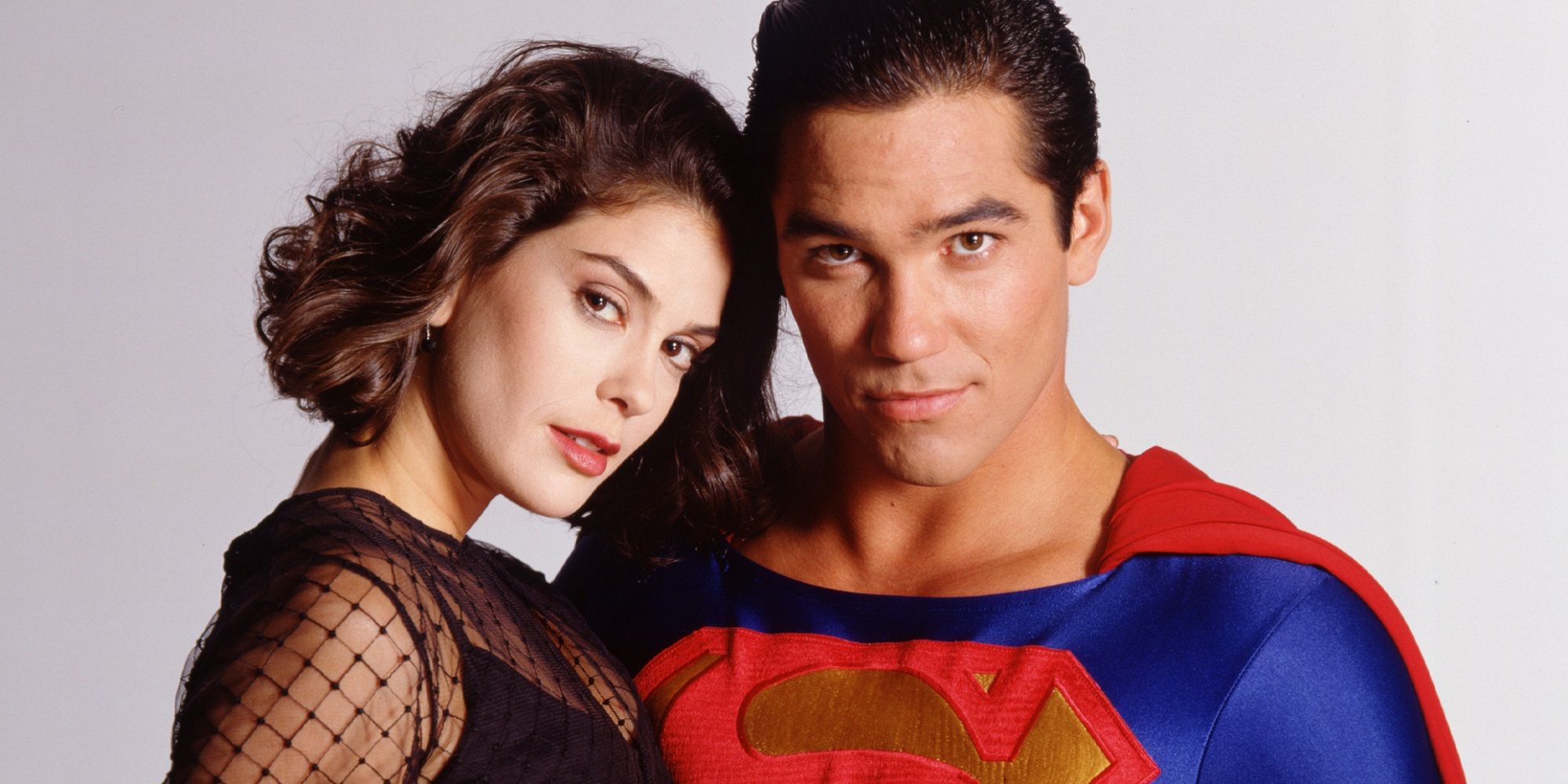Superman is, quite possibly, the most recognizable figure in American culture. As a refugee from a homeland to which he can never return, Kal-El, the last son of Krypton, is the living embodiment of Americana. With a history dating back nearly 80 years, Superman has appeared in virtually every medium imaginable, from radio, to film, television, and video games. All of these adaptations of the character have left their own marks on his legacy, and contributed into making Superman a hero for all time.
For this article, we're going to take a look at some of the creative liberties that various incarnations of Superman have taken with the source material. With a character as long-running as Supes, nothing is set in stone. He changes with the times, not just in terms of his powers and abilities, but with regards to his characterization and that of his allies and enemies. Here are 12 Key Differences Between Comic And Live-Action Adaptations Of Superman. We're going to focus mainly on the seven movies starring Christopher Reeve, Brandon Routh, and Henry Cavill, as well as the television versions of the character, as played by George Reeves, Dean Cain, Tom Welling, and Tyler Hoechlin's guest appearances on Supergirl.
12. Super Strength
In the comics, Superman's strength has varied wildly. In the classic Golden Age of Comics, he was strong enough to carry objects like boats and trucks with minimal effort. By the time the Silver Age rolled around, his strength was bumped up to where he could throw planets around like basketballs, in addition to being totally immune to Earthly forms of damage -- up to and including laughing off a nuclear bomb to the face. In the 1980s, Superman's power level was scaled back in an effort to make him less invulnerable and open up more story opportunities for the character. However, most would agree that his strength was made too low as a result, and, over the years, he gradually regained much of his power, though he never quite returned to the obscene levels of the height of the Silver Age.
In the classic television series, The Adventures of Superman, starring George Reeves, Superman was about as strong as his Golden Age counterpart, though budget concerns prevented any bombastic displays of his otherworldly strength beyond bending prop steel in his bare hands. In the Superman film series of the late '70s and '80s, Superman wasn't quite a match for his Silver Age counterpart, but he was still the most powerful version of the character to appear on the big screen to date. In Superman III, he freezes a large lake and then lifts it over his head to put out a fire. In Superman Returns, which effectively replaced Superman III and everything that followed in the Donner/Singer continuity, Supes rips an entire continent out of the Earth and throws it into space, in what is easily the most impressive feat of strength in any onscreen version of the character.
For the DC Extended Universe, Henry Cavill's version of the character isn't quite as strong as Christopher Reeve/Brandon Routh, but he makes up for it with an increased versatility during the film's highly kinetic fight scenes, courtesy of advanced 21st century special effects. In Man of Steel, Superman is shown exerting tremendous effort to keep a metal spire from collapsing while buying time for his oil rig co-workers to escape the crumbling structure.
Overall, we wouldn't want to pick a fight with any version of Superman. Henry Cavill punches the hardest, but Reeve/Routh could easily defeat him in a straight weightlifting contest. Of course, the strongest version of the character is still the Silver Age comics version, who was overpowered beyond compare.
11. Main Identity: Clark Kent, Superman, or Kal-El?
We all know the hero, Superman. We also know his human identity, Clark Kent, as well as his Kryptonian name, Kal-El. But which of these three distinct identities does the Man of Steel most identify with? In the comics, the dominant identity depended on the era and the writer. Some stories worked better with Superman as the disguise, and some were stronger with Clark Kent as the alter ego. A final consensus will probably never be reached, and we're fine with the comics switching back and forth. After all, many people with mixed-race backgrounds tend to go back on forth on which of their multiple ethnic backgrounds they choose to identify themselves as. Sometimes one, the other, or even both. Supes is a man of two worlds, and it suits the character nicely.
The movies and television series have each taken their own stance on Superman's main identity. On television, both The Adventures of Superman and Lois & Clark made it clear that Kent was the dominant persona. In fact, George Reeves's version of the character never got to learn about his parents or his birth name, just that he was an incredibly powerful alien.
The 1970s movies made use of Superman's secret base, the Fortress of Solitude, and established his main identity as Superman, Earth's Kryptonian savior. Clark Kent was just a persona he donned to avoid suspicion and blend in with the local populace. Although he grew up and spent his youth as a Kent, by adulthood, he had all but grown out of identifying himself as a human. While technically not canon to the Donner/Singer movies, the television series Smallville depicts this transformation, with Tom Welling's teenage Clark Kent gradually transitioning away from his Earthly upbringing and embracing his alien roots and destiny as protector of Earth.
Man of Steel takes a decidedly different approach. In this continuity, Clark Kent is an outcast as a youth, and he doesn't reach full maturity until he learns the details of his alien heritage. This version of the character uses Clark Kent as a disguise, but his Superman persona is used as a symbol for humanity and their difficult quest towards the sun. His main identity is Kal-El, the last son of Krypton, a refugee immigrant trying to live out the American Dream.
To put it plainly, George Reeves is Clark Kent, Christopher Reeve is Superman, and Henry Cavill is Kal-El.
10. Clark Kent's Personality
Fans of the movies and fans of the television versions of Superman have two distinct images of Clark Kent. Movie people know Kent as the meek and bumbling reporter for The Daily Planet newspaper. He wears ill-fitting suits and has an awkward haircut, and never knows what to say around Lois. Basically, he's a dork. On the other hand, fans of Superman's small screen adventures see Clark Kent as an intrepid reporter, practically on the same level as Lois Lane herself.
For The Adventures of Superman, budget concerns prompted the increased heroism of Kent. If Clark Kent could solve most of the episode's mysteries on his own, then they wouldn't need to bring in Superman (and his penchant for expensive special effects) until the very end of the episode. This led to Clark Kent -- despite being described in the opening narration as "mild-mannered" -- to actually be hugely capable and supremely cool in his own right. He had a playful and lightly flirtatious banter with Lois, and Jimmy Olsen looked up to him for inspiration. The barrel-chested George Reeves filled out his suits like any of the era's greatest film noir heroes. Sometimes, Superman was only brought in for the final showdown to throw a few obligatory punches to remind viewers that this was a superhero show and not a hard-boiled detective story.
Like the George Reeves series before it, Lois & Clark was developed as a show which showcased Clark Kent as the main character. This time, Dean Cain turned Clark Kent/Superman into a sexy leading man. The show was equally seen as a romantic soap opera and an action/adventure series. Dean Cain was a pretty versatile actor on Lois & Clark, equally in charge as both the macho alien strongman and the sweet-and-sensitive romantic hunk.
9. Superboy Or No Superboy?
In the comics, Superman had adventures as a young teen in Smallville under the admittedly silly name of Superboy. Apparently, DC Comics wasn't too proud of the Man of Steel's juvenile adventures, and the character was eventually retconned out of existence, making it so that Superman hadn't become a superhero until adulthood.
To date, there's only been one true live-action version of the character, and it was in Superboy, a little-remembered television series which aired for 100 episodes in syndication, to moderate success. However, all of the movies and television series, with the obvious exception of Smallville, make no mention of Clark Kent/Kal-El fighting crime as a teenager. Smallville borrows many elements of the Superboy mythology, but Tom Welling's Clark Kent doesn't officially don the tights until the final episode of the series, by which point he is already a full-fledged adult.
Man of Steel plays with the idea of Superman using his powers in his youth, as it features a young Clark Kent desperate to use his powers to save his adopted father, Jonathan (Kevin Costner). However, Jonathan stops him, choosing to die rather than let Clark's secret come out before the world (or possibly, his adoptive son) is ready. Fan debate rages on as to whether he made the right choice.
8. Kryptonian Origin
As mentioned before, George Reeves's version of Superman never knew any details of his origin, although the first scenes of the pilot episode, "Superman on Earth," are pretty faithful to the comic book origins of the time, depicting the destruction of Krypton and the death of his parents after they send him to Earth, where he is ultimately adopted by the Kents. However, they receive no record of his origin and there is no Fortress of Solitude here, so Superman never learns his birth name, Kal-El.
The Richard Donner film is similar in its depiction of the destruction of Kal-El's homeworld, though it does show off some more of Kryptonian society. Still, it is Zack Snyder's Man of Steel which really makes an effort to showcase the massive scale of Krypton's final hours. Both Man of Steel and Superman: The Movie feature the imprisonment of General Zod and his lieutenants, but MoS is the only live-action version of the story in which Zod and Jor-El engage in brutal hand-to-hand combat. Either way, Krypton winds up being destroyed, so all of that world-building generally comes to naught, although it provides precious context for the later drama of the film, in which it is revealed that the Kryptonian Codex, the genetic template for all of Krypton, is stored inside of Superman's own DNA. He is literally the living legacy of his doomed home world.
7. Time Travel
In Superman: The Movie, Clark Kent fails to save Lois Lane from dying in a rockslide caused by the villainous Lex Luthor. In his grief, he flies around the Earth so fast that he travels backwards through time, giving him a chance to correct his mistake and save everybody. Time warp is a power dating back to the Silver Age version of the character, who, as mentioned earlier, was so overpowered that he was virtually invincible. In Man of Steel, which is generally based on more modern depictions of the character, Superman still possesses super speed, and can even break the sound barrier, but it's likely that time travel is far out of reach for this darker and grittier version of the character.
Time travel was seen in The Adventures of Superman, Lois & Clark, and Smallville, but it was always as a result of technological wonders, rather than Superman's innate powers. In the first television series, Professor Twiddle has a mishap with his time machine, sending Clark Kent, Lois Lane, and others back in time to 50,000 BC. It's silly, but very much in the spirit of the wacky Silver Age. Lois & Clark featured H.G. Wells as a recurring character, whose use of his own time machine facilitated several time travel stories. Finally, Smallville featured Jor-El at the Fortress of Solitude, who was able to project Kal-El through time through his omniscient powers as a Kryptonian artificial intelligence.
6. Superman's Pal, Jimmy Olsen
Jimmy Olsen is one of the mainstays of Clark Kent's Daily Planet family, alongside Lois Lane and Perry White. Across various media, Lois has always been a no-holds-barred reporter, and White has always been "the chief," but young Jimmy is the character with whom the most artistic liberties have been taken over the years. The Adventures of Superman and the original feature film versions of Olsen follow the adorkable bowtie-wearing precedent of the comics of the day, but recent iterations have seen some wild revisions to the character.
In Lois & Clark, actor Michael Landes was the first to play Jimmy Olsen, but he was eventually replaced by the younger and cuter Justin Whalin for season 2 onwards. The idea of a cool and hip Olsen would be revisited with greater success in the CBS/CW series, Supergirl. Set years after Superman has already established himself as Earth's protector, an older and more confident James Olsen serves as one of Kara Zor-El's most prominent love interests before being bitten by the crime-fighting bug and assuming the heroic persona of Guardian.
Jimmy didn't appear in Man of Steel, but he had a small role in Batman v Superman, though he was only identified by name in the R-rated extended cut. In this version, Jimmy is a CIA agent disguised as a journalist working alongside Lois Lane, and he's killed with very little fanfare. Being dark and edgy is great, but this decision was seen by some to be in exceptionally poor taste, though others applauded Zack Snyder for taking risks with such an established and adored character. Like pretty much every other aspect of the DCEU, Olsen's brief appearance was a devisive one.
5. Heat Vision
This may seem like a small nitpick, but a lot of internet groups lost their minds when they found out that Supergirl's heat vision would be blue and not red. It sounds silly, but people -- especially passionate and anonymous ones on the internet -- take these tiny visual details very seriously. Indeed, every version of Superman with heat vision has generally made use of the red laser eyes. In the Christopher Reeve movies, his heat vision takes the form of two highly concentrated red laser beams. In Lois & Clark, his control over his heat vision is so precise, it's even how he shaves in the morning, making use of a mirror to reflect the beam.
In Man of Steel, Kryptonian heat vision is less like a laser and more like a sustained spew of plasma. The color is more golden than red, though Superman can still focus the beam with great effort, which he does when providing assistance to an injured Lois, cauterizing her wounds with a precise gaze. Overall, it's a much more visceral special effect than the Christopher Reeve version, with seemingly more destructive capabilities.
Finally, in Supergirl, both the Man of Steel and his cousin make use of the needlessly controversial blue beams in their heat vision, which add a literally white-hot intensity to the destructive eye-beams. While the effect still looks visually impressive, it errs slightly on the side of the more conservative Christopher Reeve laser vision, rather than the more plasma-styled vision of the DCEU.
4. Superman's Dark Side
While Superman may have a reputation for being a big blue boy scout, he still has a dark side, and it's a bad place to be. Henry Cavill's version of the character caught a lot of flak from some parts of the fandom after he killed Zod in Man of Steel, while the comic book version of the character steadfastly refuses to kill under any circumstances. Even in the Superman and Batman vs Aliens and Predator crossover, when Batman himself was content to slay legions of Xenomorphs, Superman wouldn't bring himself to take a life in such a manner. Still, sometimes there's no choice. Besides, deleted scene with the "arctic police" notwithstanding, Superman kills General Zod in a much rougher display of strength in Superman II, crushing his hand and then throwing him across the room and into a seemingly bottomless pit.
People either praise or blame Zack Snyder for sticking to his darker and edgier vision for the character in Batman v Superman: Dawn of Justice. In that film, Superman is arguably even more brutal and intimidating than Batman, with lots of scowling in the rain and even a Christian Bale-esque guttural rasp in his voice at times.
Superman is generally not depicted as such a dark character in most media, but that's a choice made by the character whenever the stakes become palpably high. The darkness is always there, but he doesn't embrace it in the way a character like Batman does. For all its faults, Superman III tackles this issue head-on after the super-powered Kryptonian is affected by Red Kryptonite, a substance which essentially turns him evil. In what most agree is the best scene in an otherwise wholly underwhelming movie, Superman's good and bad sides fight to the death in a junkyard. It's a physical and emotional battle, filled with cutting edge special effects and strong acting from Christopher Reeve.
3. Costume
The first color episodes of The Adventures of Superman (starting with season 3) made use of a costume that was practically identical to the comic book version. This version of the costume isn't far removed from the version worn by Christopher Reeve in his movies. For Lois & Clark and Superman Returns, the colors were somewhat muted and the cloth was changed to more modern materials, but the basic design remained unchanged. It wasn't until Man of Steel that the suit would undergo a major overhaul.
Since his inception, Superman was always depicted with red "strongman" trunks. Essentially, it looked like he wore underwear outside of his tights. Despite the inherent silliness of the visual, it was a trait which stuck with the character through all of his television incarnations and motion pictures, up to and including 2006's Superman Returns. However, for 2013's Man of Steel, the trunks were dropped from the character, along with a strong darkening and desaturation of the suit's colors. Man of Steel coincided with the New 52 relaunch of Superman comics, which also removed the red underwear from the costume.
Interestingly, it seems like Warner Brothers' marketing department was keen to hide this change to Superman's iconic wardrobe. The first photo released for the film had the character in a hunched over pose, his hips covered by shadow. Then, the first poster for Man of Steel had Superman with his hands cuffed in front of his pelvis. Once again, the lack of red underwear was cleverly hidden. Once the movie came out, some fans complained about the new look, while others liked the streamlined design. Either way, the costume was tweaked slightly for Batman v Superman, making it look less like a onesie with a more pronounced belt on the hip, among other minor changes.
2. Lex Luthor
While Superman's rogues gallery is varied, with villains ranging from humans to robots to aliens, the most popular figure to oppose the Man of Steel has always been evil industrialist Lex Luthor. In addition to his comic book roots, Luthor starred in the 1950 serial, Atom Man Vs Superman, three of the four Richard Donner movies, Superman Returns, and, most recently, Batman v Superman. On television, the character appeared in virtually every live-action incarnation of the character, with the notable exception of the 1950s series, The Adventures of Superman.
In the Richard Donner movies, Gene Hackman played an endearingly campy version of the megalomaniac, whose quirkiness was offset by his sheer disregard for human life. Kevin Spacey took this characterization to the next level in Superman Returns, retaining the ego-driven approach of Hackman while stripping down the campiness, imbuing Luthor with genuine menace which is only exacerbated by his knack for black humor. He's not insane, though; just evil.
While Luthor didn't appear in Man of Steel, he did finally pop up in Batman v Superman, played by Jesse Eisenberg. This version more closely resembles The Riddler as a business man than any previously established version of Luthor, but he's still very watchable, in a slow motion train wreck kind of way. With bizarre moments involving Jolly Ranchers and "Peach Tea," combined with a unique speech pattern and some overtly implied mental illness, this version of Lex Luthor is markedly different, to say the least.
One of Lex's most notable appearances was in Smallville, played by Michael Rosenbaum. This version of the character had a long and involved story arc stretching over the first seven seasons of the show (as well as the finale of the tenth and final season), and Rosenbaum won universal praise for his realistic take on the psychosis of a comic book villain.
Lex Luthor was a recurring villain in Lois & Clark, played by John Shea. The legend goes that Shea got into character as Lex by studying Shakespeare's Richard III, the story of an ugly silver-tongued manipulator who lies and cheats his way to the top only to see his empire crumble under his inept rule. Shea's other inspiration for his role as Lex? Donald Trump.
1. Lois Lane: Will They Or Won't They?
Sure, Lana Lang was Clark Kent's teenage sweetheart, and he and Wonder Woman have some serious sexual tension, but everyone knows that Lois Lane is Superman's one true love. Their relationship was a slow burn over the course of many decades, but they are the essentially the gold standard of superhero romances. Most recently in the comics, Clark and Lois had a son, Jonathan Samuel Kent, who inherited his father's powers.
In The Adventures of Superman, Lois and Superman had a flirty chemistry, but the draconian standards of 1950s television prevented them from sharing so much as a kiss. On the other hand, Lois & Clark was hot and steamy, essentially casting Superman as the hunky hero of a romance novel.
In the Christopher Reeve films, like the George Reeves series and the comics which inspired them, Lois wasn't particularly interested in Clark Kent, but carried a serious torch for Superman. In Superman II, she discovers his secret and they spend a night together. At the end of the film, Superman makes the decision to erase Lois's memory of discovering his secret, not knowing that she is pregnant with his child, who plays a key role in the distant sequel, Superman Returns.
In Man of Steel, Clark doesn't really have a secret identity, and Lois learns that he is an alien fairly early on. It certainly doesn't stop her from kissing him after the climactic battle in Metropolis, and by the time of Batman v Superman, they're a fully committed couple; they even take cute baths together!
---
So, what's your favorite version of Superman? Has any live-action incarnation of the character surpassed his comic book depictions? Do you prefer the red trunks or the solid blue onesie? Sound off in the comments!

